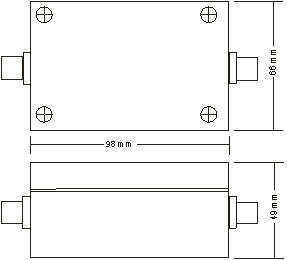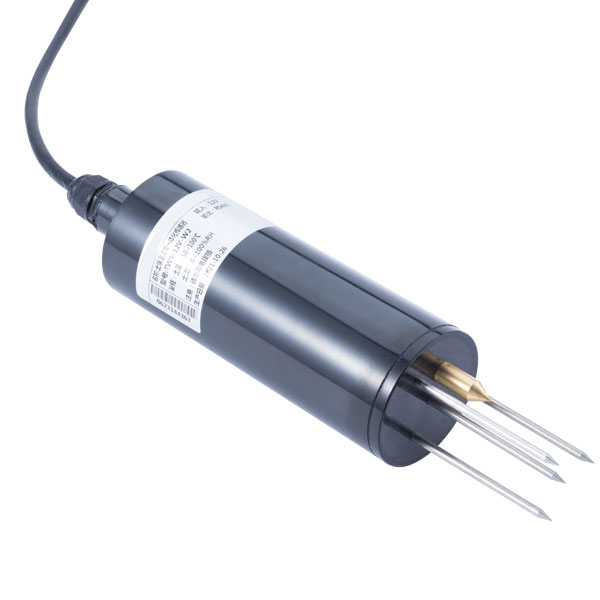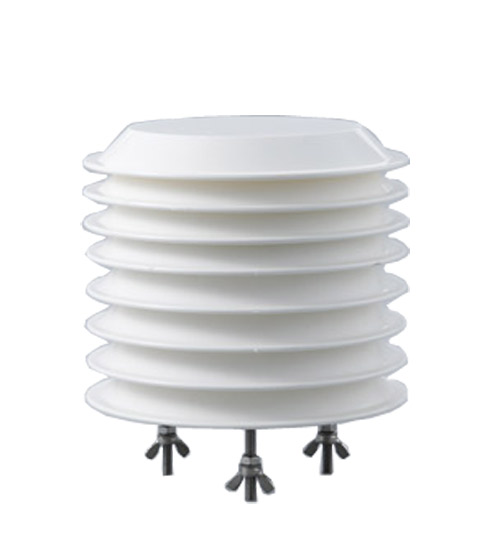

 Consumer hotline +8618073152920
Consumer hotline +8618073152920 WhatsApp:+8615367865107
Address:Room 102, District D, Houhu Industrial Park, Yuelu District, Changsha City, Hunan Province, China
All products
A soil heat flux plate (also known as a soil heat flux sensor, soil heat flux plate, heat flux meter), is an instrument used to measure heat flux and can be used for internal soil measurements. It passes through a thermopile and outputs as a voltage, which is proportional to the heat flux. It is easy to handle and is suitable for measuring the thermal conductivity of soil and building walls and glass walls. The value of soil heat flux obtained by using a heat flux plate measu···
Product Details
Soil heat flux sensor (also known as "soil heat flux plate", "heat flow meter") is mainly used to measure the energy balance of the soil and the thermal conductivity of the soil layer.
The soil heat flux sensor measures temperature gradients using a thermopile consisting of two different metallic materials. Thermopile detectors receive thermal radiation, which can generate a thermoelectric potential between junctions of two dissimilar materials.
The heat flux sensor outputs in the form of voltage, the voltage is proportional to the heat flux, the output voltage is a millivolt signal, and the millivolt signal is read by the data acquisition system.
This product has high measurement accuracy, convenient use and maintenance-free, and can be widely used in various environmental monitoring.
technical parameter:
Measuring range: -500~500W/m2
Accuracy: ±5%
Power supply:DC 5V/DC12-24V
Output form: -100mV~100mV/ 0~2.5V/RS485
Instrument cable length: 10 meters
Working temperature: -40℃~50℃
Working humidity: 0~100%RH
Transmitter size:

Instructions for use:
The installation of the soil heat flux sensor should select a representative place within the research range. If the surface layer is more complex, the sensor should be placed in an effective part with a lower coverage and a more balanced soil heat flux.
During use, be sure to pay attention to the front and back of the heat flux sensor, the correct placement is the front side up.
First, use a small shovel to dig a vertical hole, determine the distance from the heat flux sensor to the top of the ground according to the user's requirements, then use a small knife to make a horizontal cut in the side of the hole, try to keep the soil surface intact, or the minimum Without being damaged, insert the heat flux sensor into the horizontal cutout. In order to obtain accurate soil heat flux, it is necessary to ensure that the heat flux plate is in full contact with the soil.
Remember, do not lead the output wire of the heat flux plate directly to the soil surface. A small section of the output wire of the heat flux plate should be buried in the soil to reduce the heat conduction of the output wire.
After all sensors are installed, be sure to return the excavated soil to its original position as soon as possible.
During the year, the soil heat flux changes with the change of seasons. In summer, the soil heat flux is positive, that is, there is heat entering the soil layer, and the amount is large; in winter, the soil heat flux is negative, and the soil heat flux is negative. The heat is released to the atmosphere, but in small amounts.





Soil heat flux sensor principle of operation.
Soil heat flux sensors (also known as "soil heat flux plates" and "heat flow meters") are used to measure the energy balance of the soil and the heat transfer rate of the soil layer. Soil heat flux sensors measure temperature gradients using a thermopile, which is composed of two different metal materials.
The thermopile detector receives thermal radiation, which creates a temperature difference potential between the junctions of the two different materials. The heat flux sensor outputs as a voltage, which is proportional to the heat flux, and its output voltage is a millivolt signal, which is read by the data acquisition system.
Soil heat flux sensor installation points.
The plate surface is perpendicular to the direction of heat flux and placed horizontally in the soil layer. Sensor burial depth, usually 3-10cm deep from the natural sub-bedding surface, should try to avoid setting directly on the surface of the soil layer, because the natural sub-bedding surface is not a geometric plane, the surface of the small undulations will make the sensor readings lose representativeness, while the upper surface of the sensor directly in contact with the air may also produce radiation errors, usually in the observation site to select a representative lot, with a shovel knife vertically down Dig a profile, from the soil surface down along the profile, measure out the required depth, and then hollowed out along the horizontal direction, the size can just be placed on the heat flow plate, and make the sensor up and down both sides of the surface can maintain good contact with the soil, the wire will be led out along the profile and then the soil backfill.
However, it should be noted that the burial depth of the heat flow plate should be the distance between its centerline and the soil surface.
Prev:CO2 gas concentration transmitter CO2 gas sensor Manufacturer
Next:soil hygrometer detection module soil moisture sensor soil ec sensor precision farming sensors
Sensors & Weather Stations Catalog
Agriculture Sensors and Weather Stations Catalog-NiuBoL.pdf
Weather Stations Catalog-NiuBoL.pdf
Related recommendations
 Soil Temperature Moisture Sensor 4-···
Soil Temperature Moisture Sensor 4-··· Air temperature, humidity and atmos···
Air temperature, humidity and atmos··· High precision soil pH sensor pH de···
High precision soil pH sensor pH de···
Screenshot, WhatsApp to identify the QR code
WhatsApp number:+8615367865107
(Click on WhatsApp to copy and add friends)